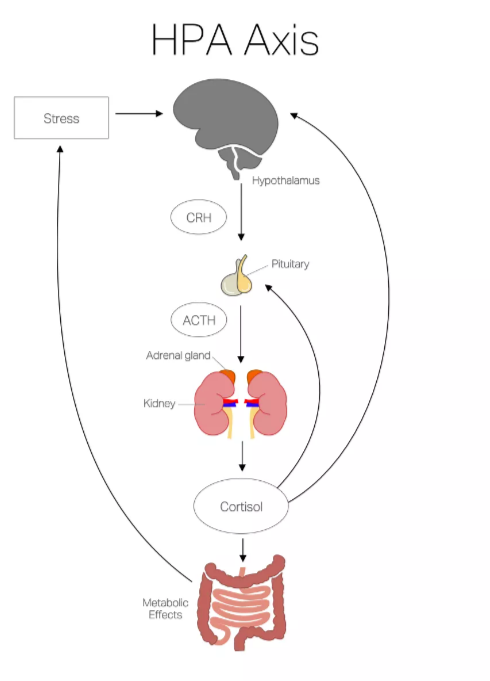Stressors & Stress Response
Urban environments are replete with stressors
A stressor is defined as a novel threatening environmental agent that alters the baseline human biological system in either of two ways: bringing the system to an unstable biological state, or slowing down the system’s internal response so that it cannot reach equilibrium.
For clarity, environmental stressors can be both internal and external, such as infections and emotional stressors, or extreme weather conditions and trauma respectively.
In order to provide an adequate response to stressors, the body engages the stress response, a cascade of physiological reactions that act at two different time frames.
Firstly, a short-term response, also identified as ‘fight or flight’, allows the body to respond immediately to life-threatening events. This is achieved via a complex communication between the brain and endocrine, cardiovascular, immune and digestive systems.
Secondly, a long-term response occurs when the stressor persists for a significant amount of time, often preventing the body from returning to baseline biological parameters, thus posing a serious risk to health. In this frame, we define two types of stressors: an acute stressor is one that lasts for minutes or hours and results in the short-term stress response; a chronic stressor is instead one that persists for days or more, leading to the long-term stress response. The biological pathways involved in the stress response fall into two categories, namely the hypothalamic-pituitary-adrenal (HPA) axis and the autonomic nervous system (ANS). 
The malfunctioning of the two pathways is a leading cause of many pathologies, such as autoimmune diseases. Although both play an important role in responding to stressors, the HPA-axis will be the main focus of this review, given that it is more widely studied and thus there is more evidence for its mechanisms. This pathway is based on a communication between the nervous and endocrine (hormones) systems, whereby glucocorticoids play a significant role as regulators.
Importantly, the HPA-axis is tightly controlled by negative-feedback loops, which ensure that hormonal levels remain within a healthy range for the body.
References
1. Oken, B. S., Chamine, I. & Wakeland, W. A systems approach to stress, stressors and resilience in humans. Behav. Brain Res. 282, 144–154 (2015).
2. McEwen, B., Nasveld, P., Palmer, M. & Anderson, R. Allostatic Load A Review of the Literature. (2012).
3. Won, E. & Kim, Y.-K. Stress, the Autonomic Nervous System, and the Immune-kynurenine Pathway in the Etiology of Depression. Curr. Neuropharmacol. 14, 665–673 (2016).
4. Schneiderman, N., Ironson, G. & Siegel, S. D. Stress and health: psychological, behavioral, and biological determinants. Annu. Rev. Clin. Psychol. 1, 607–628 (2005).
5. McEwen, B. S. Stressed or stressed out: what is the difference? J. Psychiatry Neurosci. 30, 315–318 (2005).
6. Smith, S. M. & Vale, W. W. The role of the hypothalamic-pituitary-adrenal axis in neuroendocrine responses to stress. Dialogues Clin. Neurosci. 8, 383–395 (2006).
7. Stephens, M. A. C. & Wand, G. Stress and the HPA axis: role of glucocorticoids in alcohol dependence. Alcohol Res. 34, 468–483 (2012).

